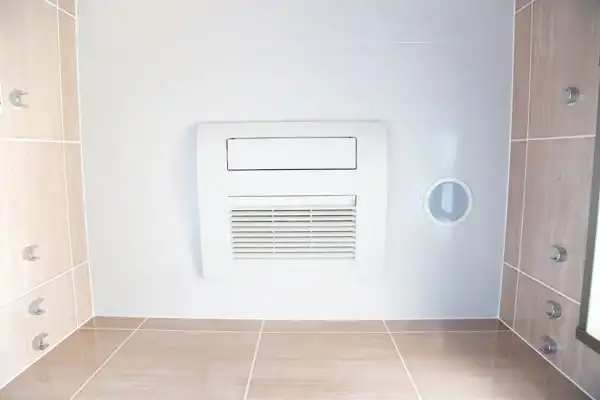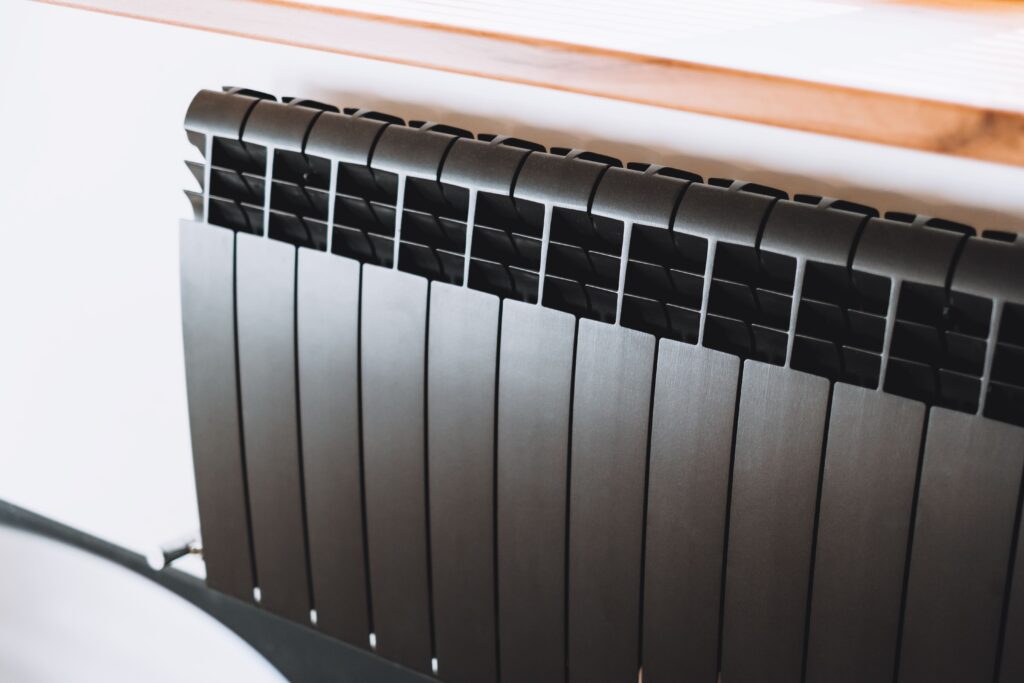Living in Tennessee’s humid climate presents unique challenges for homeowners, with mold and mildew ranking among the most persistent problems. These unwanted guests thrive in moisture-rich environments, turning our homes into breeding grounds for potentially harmful fungi.
The battle against mold and mildew requires a strategic approach, particularly in regions where humidity levels naturally soar. From bathroom corners to basement walls, these organisms can establish colonies in any damp space, leading to:
- Unsightly dark spots and discoloration
- Musty odors that permeate living spaces
- Structural damage to building materials
- Potential health risks for residents
Humidity control stands as the cornerstone of effective mold prevention. By maintaining optimal moisture levels inside our homes, we can create an environment where mold and mildew struggle to survive. This guide from the HVAC and plumbing experts at Pioneer Heating, Cooling & Plumbing explores practical strategies to help you protect your living space from these persistent invaders, focusing on proven methods that work specifically in humid climates.
Here are the techniques you need to keep your home healthy, dry, and mold-free.
Understanding Mold and Mildew
Mold and mildew are two types of fungi that grow well in humid environments, but they have different features:
Mold Characteristics:
- Appears fuzzy or slimy
- Colors range from black to green, blue, or red
- Penetrates deep into organic materials
- Requires professional removal in severe cases
Mildew Traits:
- Appears flat and powdery
- Usually gray or white in color
- Stays on material surfaces
- Can often be cleaned with household products
Both mold and mildew thrive under certain conditions:
- Humidity levels above 60%
- Temperatures between 60-80°F (15-27°C)
- Poor air circulation
- Dark, damp spaces
- Organic materials (wood, paper, fabric)
Standing water, condensation on windows, or water-damaged materials provide ideal breeding grounds for both mold and mildew. These conditions are commonly found in bathrooms, basements, and poorly ventilated areas where moisture tends to build up.
Health Risks Associated with Mold and Mildew
Living with mold exposure can lead to serious health problems. The tiny spores released by these fungi can become airborne, posing potential health risks when inhaled.
Common symptoms of mold exposure include:
- Persistent sneezing and coughing
- Itchy, watery eyes
- Skin rashes or irritation
- Chronic headaches
- Nasal congestion
- Throat irritation
People with pre-existing conditions are at greater risk. Those with asthma may experience more frequent attacks, while individuals with weakened immune systems could develop severe respiratory infections.
High-risk groups requiring extra precautions:
- Young children
- Elderly individuals
- Asthma patients
- People with allergies
- Those with compromised immune systems
These health risks highlight the importance of keeping humidity levels in check and addressing mold problems quickly in your home.
The Impact of Humidity on Homes
High indoor humidity levels can cause significant damage to your home’s structure and living spaces. By understanding the sources of excess moisture, you can prevent potential damage and expensive repairs.
Common Sources of Indoor Moisture:
- Cooking and boiling water
- Showering and bathing
- Wet laundry drying indoors
- Unvented clothes dryers
- Leaky pipes and faucets
- Foundation cracks
- Poor drainage around the house
- Indoor plants
Signs of Excessive Home Humidity:
- Condensation on windows
- Peeling paint or wallpaper
- Warped wood floors
- Water stains on walls or ceilings
- Musty odors
The Environmental Protection Agency recommends keeping indoor humidity levels between 30% and 50%. Levels above 60% create ideal conditions for mold growth and structural damage. During winter months, humidity should stay closer to 30% to prevent condensation on cold surfaces. Summer months may require more aggressive moisture control to maintain levels below 50%.
Proper humidity management protects both your home’s value and structural integrity. Regular monitoring helps identify potential issues before they escalate into serious problems requiring extensive repairs.
Measuring Your Home’s Humidity Levels
Accurate humidity measurement is essential for maintaining a healthy home environment. A hygrometer serves as your primary tool for monitoring indoor moisture levels. These devices come in two main varieties:
- Digital Hygrometers: Feature easy-to-read displays and often include additional functions like temperature readings
- Analog Hygrometers: Traditional dial-based devices that use mechanical components to measure humidity
For optimal accuracy, place your humidity measurement tools:
- Away from direct sunlight
- At least 3 feet from doors and windows
- In multiple locations throughout your home
- At breathing level (about 4-6 feet from the floor)
Many modern smart home systems integrate humidity sensors, providing real-time monitoring through mobile apps. These advanced systems can alert you when humidity levels rise above the recommended range, allowing for quick action to prevent mold growth.
1. Use Dehumidifiers to Fight Excess Moisture
Dehumidifiers are effective devices that help reduce excess moisture in the air.
How Dehumidifiers Work:
- The unit’s fan system draws in air from the room.
- Warm, humid air passes over cold evaporator coils inside the dehumidifier.
- Moisture in the air condenses on the coils, forming water droplets.
- The collected water drips into a removable tank for easy disposal.
- Dried air passes over warm condenser coils, where it is heated up.
- Clean, dehumidified air is released back into your space.
When choosing a dehumidifier, consider the following options:
- Portable units — Ideal for single rooms or small spaces
- Whole-house systems — Suitable for basement or crawl space installation
- Energy Star rated models — Help reduce electricity costs while maintaining efficiency
To maximize the effectiveness of your dehumidifier, keep these placement tips in mind:
- Position the unit away from walls and furniture to allow proper airflow.
- Place it in areas with the highest moisture levels, such as bathrooms or laundry rooms.
- Ensure there is adequate air circulation around the device for optimal performance.
- Close doors and windows during operation to prevent outside humidity from entering.
For best results, run your dehumidifier consistently to maintain optimal humidity levels in your space. Remember to regularly empty the water collection tank or set up a continuous drainage system for uninterrupted operation. The size of your room or area will determine the capacity needed — which is typically measured in pints of moisture removed per day.
2. Ensure Proper Ventilation to Keep Home Humidity Levels Down
Proper ventilation acts as your home’s natural defense against excess moisture. A well-ventilated home creates an environment where mold and mildew struggle to survive.
Strategic Placement of Exhaust Fans
- Install bathroom fans with adequate CFM (cubic feet per minute) ratings
- Run kitchen hood fans during cooking and 15-20 minutes after
- Position fans to direct moisture outside, not into attics or crawl spaces
- Clean fan covers monthly to maintain optimal airflow
Maximizing Air Circulation with Ceiling Fans
- Set fans to rotate clockwise in winter and counterclockwise in summer
- Run fans at medium speed to create consistent air movement
- Position furniture to allow unrestricted airflow
- Use fans in conjunction with air conditioning for enhanced moisture control
Additional Ventilation Tips
- Open windows on less humid days to allow fresh air exchange
- Create cross-ventilation by opening windows on opposite sides
- Install window fans to pull in fresh air or expel stale air
- Consider whole-house ventilation systems for comprehensive moisture control
Regular maintenance of your ventilation system ensures its effectiveness. Replace worn-out fan motors, check ductwork for leaks, and verify that all exhaust vents remain unobstructed. A properly ventilated home reduces condensation on windows, prevents musty odors, and maintains healthy indoor air quality.
3. Locate and Repair Plumbing Leaks Promptly to Prevent Mold Growth
Hidden plumbing leaks create perfect breeding grounds for mold and mildew. A proactive approach to plumbing leak detection can prevent extensive damage and costly repairs.
Common Sources of Plumbing Leaks:
- Loose pipe connections under sinks
- Deteriorating seals around toilets
- Cracked or damaged pipes behind walls
- Corroded water heater tanks
- Faulty washing machine hoses
- Damaged roof flashing around vents
Key Warning Signs:
- Water stains on walls or ceilings
- Bubbling paint or wallpaper
- Musty odors in specific areas
- Unexplained increase in water bills
- Damp spots on floors
- Warped or discolored baseboards
Regular inspection of these areas helps catch issues early. Check under sinks monthly, examining pipes and connections for drips or moisture. Run your hands along accessible pipes to feel for dampness. Pay attention to water pressure changes – sudden drops might indicate hidden leaks.
Professional plumbers from Pioneer Heating, Cooling & Plumbing can use specialized tools like moisture meters and infrared cameras to detect leaks within walls or under floors. These advanced detection methods identify problems before visible damage occurs, making repairs simpler and less expensive.
Remember to inspect outdoor plumbing fixtures, especially during seasonal changes. Frozen pipes can burst, while summer heat can cause pipe expansion and subsequent leaks.
4. Seek Professional Help When Needed for Effective Mold Prevention and Remediation
Regular professional inspections play a crucial role in maintaining a mold-free home environment. Pioneer Heating, Cooling & Plumbing’s licensed HVAC technicians bring specialized expertise to:
- Detect hidden mold growth in ductwork
- Clean and sanitize air handling units
- Check for proper system drainage
- Assess air filter effectiveness
- Calibrate humidity control systems
The professional plumbers at Pioneer Heating, Cooling & Plumbing use advanced diagnostic tools to identify potential issues:
- Video camera inspections of hidden pipes
- Moisture meters for wall cavity testing
- Pressure testing for leak detection
- Infrared scanning for temperature variations
- Underground pipe assessment
These expert assessments help prevent costly repairs and health hazards by catching problems early. Pioneer Heating, Cooling & Plumbing’s professional inspectors can spot warning signs that might go unnoticed by homeowners:
- Condensation in unexpected areas
- Unusual pressure drops in plumbing systems
- Inefficient HVAC performance
- Hidden moisture accumulation
- Structural vulnerabilities to water damage
Scheduling regular professional inspections — typically twice yearly — creates a proactive approach to mold prevention.
Taking Action Against Mold and Mildew In Your Humid Home
Living in a humid climate requires proactive measures to protect your home and health from mold and mildew. A comprehensive approach that combines dehumidification, proper ventilation, and regular maintenance will create a strong defense against these unwanted invaders.
Your action plan should include:
- Installing and maintaining dehumidifiers in high-moisture areas
- Using exhaust fans during cooking and showering
- Monitoring indoor humidity levels with a hygrometer
- Scheduling regular HVAC system inspections
- Conducting routine plumbing checks
Remember: Each day you delay addressing moisture issues increases the risk of mold growth and potential health complications. By consistently implementing these strategies, you’ll create a healthier living environment for you and your family.
Ready to take control of your home’s humidity? Start with a professional assessment of your property’s moisture levels and develop a customized plan to combat mold and mildew effectively. Give Pioneer Heating, Cooling & Plumbing a call or book an appointment online today.
Whether you require installation, repair, or maintenance, our technicians will assist you with top-quality service at any time of the day or night. Take comfort in knowing your indoor air quality is the best it can be with MOE heating & cooling services Ontario's solution for heating, air conditioning, and ventilation that’s cooler than the rest.
Contact us to schedule a visit. Our qualified team of technicians, are always ready to help you and guide you for heating and cooling issues. Weather you want to replace an old furnace or install a brand new air conditioner, we are here to help you. Our main office is at Kitchener but we can service most of Ontario's cities
Source link



